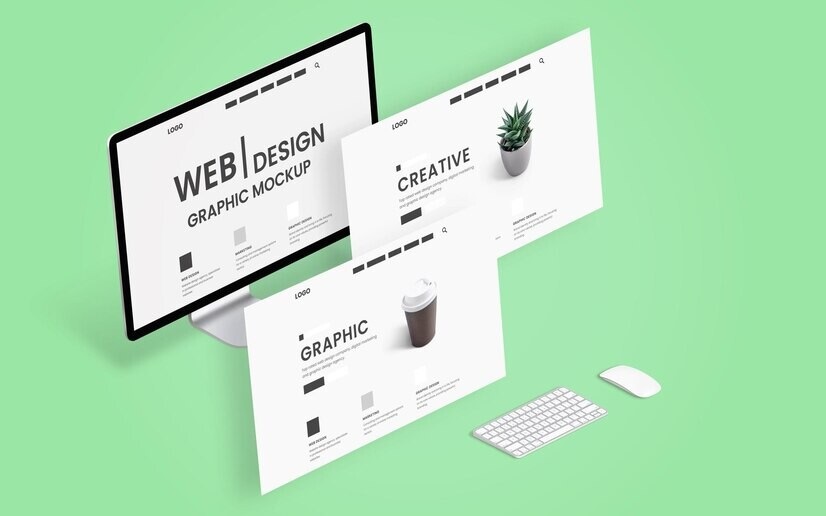In today’s world, where both individuals and businesses depend significantly on their online presence, the significance of a website designer’s job has increased dramatically. Since many people’s initial interaction with a business is online, the website’s layout and features have a significant impact on how people perceive the brand and how they utilize it. Through the eyes of an experienced designer, this essay delves into the realm of website design, examining the skill of creating captivating, engaging, and memorable digital experiences.
Comprehending The Function Of A Web Designer:
At its core, website design is a multifaceted discipline that encompasses both aesthetics and functionality. A website designer’s primary objective is to create visually appealing layouts while ensuring seamless navigation and user interaction. This entails a deep understanding of design principles, user experience (UX) best practices, and proficiency in various design tools and technologies.
The website designer’s portfolio serves as a testament to their skills, creativity, and ability to translate conceptual ideas into tangible digital experiences. The projects displayed here represent a wide variety of sectors and customer needs, and each one has been carefully designed to fulfill those needs and goals.
Exploring The Creative Process:
Behind every stunning website is a creative process that begins with thorough research and conceptualization. A website designer starts by understanding the client’s goals, target audience, and brand identity. The project’s major decisions are informed by and built upon this first phase, which also establishes the design direction.
Once the objectives are defined, the designer moves on to the wireframing and prototyping stage, where the skeletal structure of the website begins to take shape. Wireframes serve as blueprints, outlining the layout, navigation flow, and content hierarchy. Prototypes, on the other hand, provide a tangible representation of the design concept, allowing for iterative refinement based on feedback.
With the framework in place, attention turns to visual design, where aesthetics meet functionality. In this step, you’ll decide on the visual elements—like color schemes, fonts, and images—that will represent your brand and make people feel the way you want them to. A skilled designer leverages principles of balance, harmony, and contrast to create visually striking compositions that draw users in and guide them through the site with ease.
Harnessing The Power Of Technology:
In today’s digital landscape, websites are built using a variety of technologies, ranging from HTML, CSS, and JavaScript to content management systems (CMS) like WordPress and Drupal. A website designer and developer must possess a solid understanding of these tools and platforms to bring their designs to life effectively.
Plus, responsive design is becoming de challenge in web development due to the explosion of mobile devices. Web designers must be able to effortlessly accommodate varying screen sizes and resolutions when creating websites. Only then can users be guaranteed an excellent viewing experience on desktop computers, mobile phones, and tablets. By incorporating responsive design principles into their portfolio projects, designers demonstrate their adaptability and commitment to delivering user-centric solutions.
Beyond aesthetics and functionality, website performance is another critical aspect that designers must consider. Conversion rates might take a hit when users have a bad experience due to slow page loads, clumsy animations, and difficult navigation. Thus, it is crucial to optimize website speed by using methods like caching, code minification, and picture compression to guarantee efficient and smooth browsing experiences.
Showcasing Success Stories:
A website designer’s portfolio is more than just a collection of pretty pictures—it’s a showcase of their expertise, creativity, and problem-solving abilities. Each project in the portfolio tells a story of collaboration, innovation, and, ultimately, success.
For example, a portfolio may feature a case study highlighting how a designer helped a small business revamp its outdated website, resulting in increased traffic, engagement, and, ultimately, sales. By incorporating before-and-after comparisons, user testimonials, and key performance metrics, the designer effectively demonstrates the tangible impact of their work on the client’s business objectives.
Similarly, a portfolio may showcase a redesign project for a nonprofit organization, focusing on how the new website improved usability, accessibility, and donor engagement. By emphasizing the social impact of their work, the designer not only highlights their design skills but also their commitment to making a positive difference in the community.
Conclusion:
Crafting digital experiences is both an art and a science—one that requires creativity, technical expertise, and a deep understanding of user behavior. A web designer’s portfolio is like a mini-review of their work; it shows all the different kinds of projects they’ve worked on and how good they are at making designs that people love to use.
From initial concept to final implementation, the journey of designing a website is filled with challenges, opportunities, and moments of inspiration. Skilled designers are able to take people on a journey from conceptualization to completion by conducting extensive research, developing detailed plans, and paying close attention to every aspect.
The importance of website designers will only grow in the future as new technologies emerge and customer expectations are higher. By embracing creativity, embracing new technologies, and staying abreast of industry trends, designers can continue to push the boundaries of what’s possible and create digital experiences that inspire, inform, and delight users around the world.





